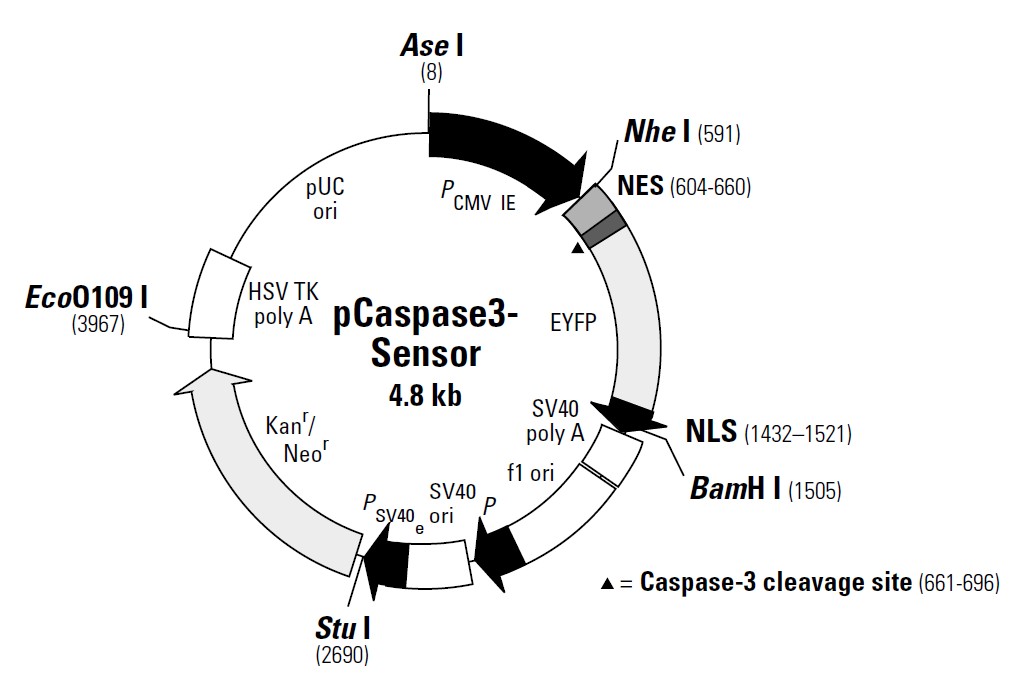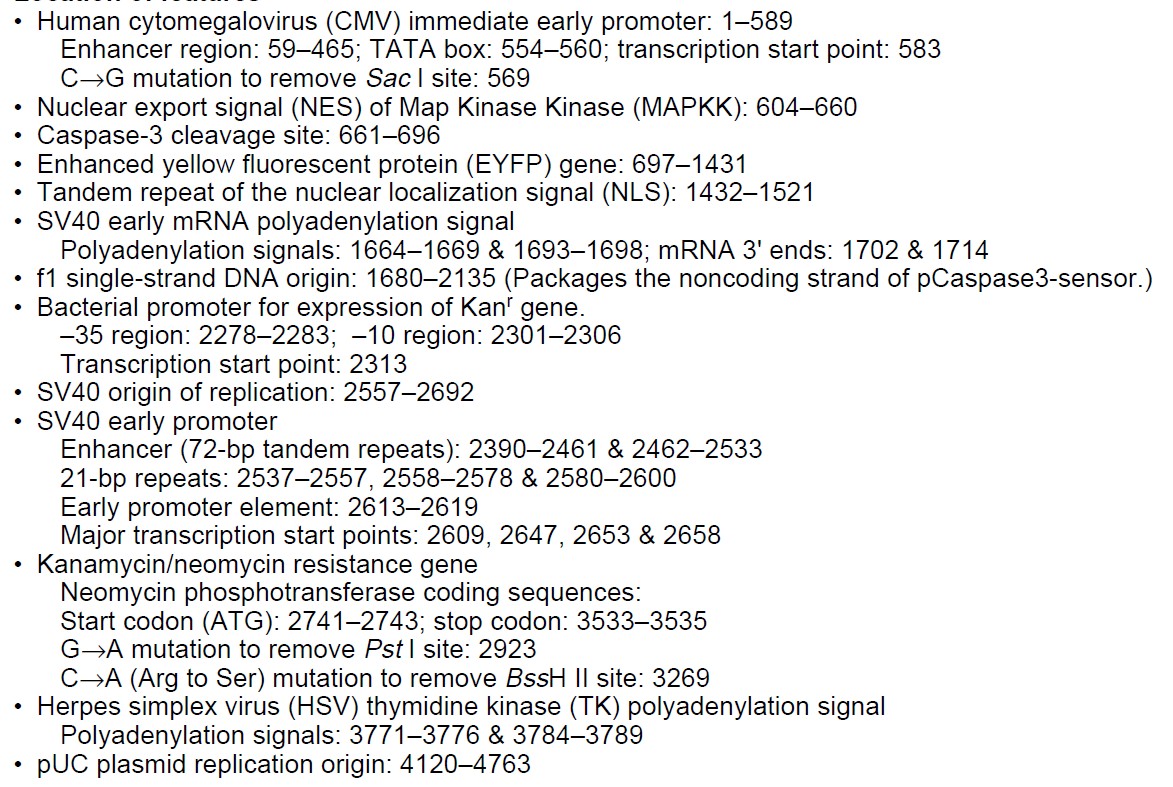pCaspase3-sensor
pCaspase3-sensor
编号 | 载体名称 |
北京华越洋VECT75369 | pCaspase3-sensor |
pCaspase3-sensor载体基本信息:
载体名称: | pCaspase3-sensor |
质粒类型: | 信号通路报告系统载体 |
高拷贝/低拷贝: | -- |
启动子: | CMV |
克隆方法: | 多克隆位点,限制性内切酶 |
载体大小: | 4.8kb |
5' 测序引物及序列: | -- |
3' 测序引物及序列: | -- |
载体标签: | EYFP |
载体抗性: | 卡纳霉素(Kanamycin) |
筛选标记: | Neomycin_1.html' target='_blank'>新霉素(Neomycin) |
备注: | -- |
稳定性: | -- |
组成型: | -- |
病毒/非病毒: | -- |
pCaspase3-sensor载体质粒图谱和多克隆位点信息


pCaspase3-sensor载体简介:
pCaspase3-Sensor Vector can be used to detect the onset of caspase-3 activity in mammalian cells.
This vector encodes the enhanced yellow-green variant (EYFP) of the Aequorea victoria green
fluorescent protein (GFP) fused at the 3' end to three copies of the nuclear localization signal (NLS)
of the simian virus 40 large T-antigen (1,2). At the 5' end the gene contains a sequence encoding
the nuclear export signal (NES) of the Map Kinase Kinase (MAPKK;3). The NES is separated from
the EYFP coding region by a 36-nucleotide sequence encoding the region of Poly (ADP-ribose)
polymerase (PARP) cleaved by caspase-3. The complete coding sequence for this fusion protein
is human codon-optimized (4).
Because the NES of MAPKK dominates the NLS, the full-length fluorescent fusion protein distributes
to the cytosol. If caspase-3 is activated, the NES will be cleaved from the fusion protein and the
truncated EYFP-NLS fusion will translocate to the nucleus via the NLS. The translocation of the
fluorescent protein from the cytosol to the nucleus indicates caspase-3 activity at a cellular level.
The fluorescence excitation maximum of EYFP is 513 nm; the emission spectrum has a peak at 527
nm (in the yellow-green region). The Em of EYFP at 513 nm is 36,500 cm–1M–1 and its quantum yield
is 0.63 (5), resulting in a bright fluorescent signal. The fluorescence intensity is roughly equivalent
to that of EGFP.
The vector contains an SV40 origin of replication and a neomycin resistance (Neor) gene for
selection (using G418) in eukaryotic cells. A bacterial promoter (P) upstream of Neor expresses
kanamycin resistance in E. coli. The vector backbone also provides a pUC19 origin of replication for
propagation in E. coli and an f1 origin for single-stranded DNA production. The pCaspase3-Sensor
Vector can be introduced into mammalian cells using any standard transfection method. If desired,
stable transfectants can be selected using G418 (6).
pCaspase3-sensor载体其他相关的其他类型载体:


